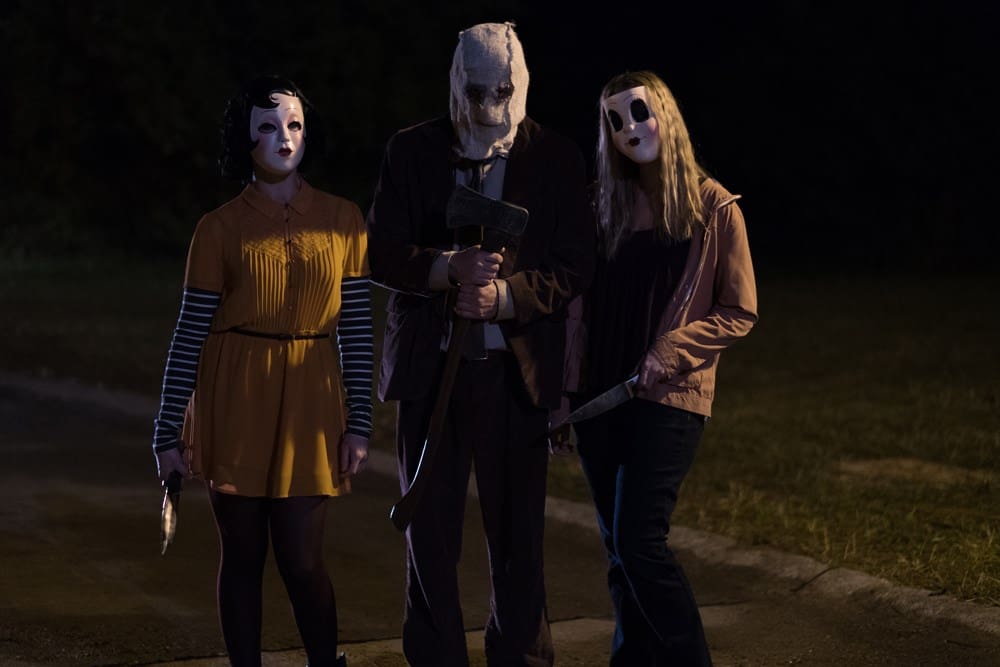
The home invasion subgenre of horror has been a staple since 1974’s Black Christmas or 1979’s When A Stranger Calls. Those were the type of movies that had audiences double-check the locks and make sure the killer wasn’t already inside the house. Ten years ago, another entry was born in 2008’s The Strangers. One of the most memorable lines for that movie was the only one that came from the antagonists to describe their motives, “Because you were home.”
Now, ten years later, The Strangers: Prey At Night is born. The movie serves to slightly broaden the premise of the original movie with some classic horror motifs mixed in. Rather than to duplicate the 2008 movie, it has its own flavor with some call backs. We caught up with director Johannes Roberts to talk about his work and vision on the film.
It’s been 10 years since the first Strangers movie and it still has that cult following behind it. Did you have any reservations given so much time has passed between movies? Perhaps people wouldn’t remember it as well.
It was definitely a conversation we had. It was too soon for a reboot. Too far away for a direct sequel. Most of the audience would have been too young to have seen the first one. Yeah, there were those conversations. In the end, I wanted to make a movie that fit into the world that Bryan (Bertino) had created, but also had its own stamp and a lot of fun on it’s own.
In the first movie, it centers around a couple that the Strangers methodically terrorize. Prey At Night introduces a family and you widened the setting that takes place in a trailer park. As a big horror fan, that was reminiscent of Friday the 13th and Camp Crystal Lake. Because the first one was localized within a home, did you only want to broaden these parts just enough?
Yeah, it needed to be a confined location. Also, equally, it needed to broaden out from the first movie. That was really the way we wanted to go. We didn’t just want it to turn into a body count movie. That will be the next installment. “Strangers Take Manhattan,” I think. But, later down the line, the body count stuff can come in.
Within Prey At Night, there were a lot of cinematography choices that I liked. As people are running away from the Strangers, the shots go from tight to a wider shot like they are being watched. I’ve read that you had The Exorcist III as an inspiration which has similar types of shots. The “nurse” scene is one I thought of.
I love The Exorcist III. I think it’s one of those underrated horror films and I think the cinematography in it is fantastic. I definitely wanted to draw from that style and still make it feel very organic and sort of the retro. Definitely have a lot of fun doing stuff like that.
So take “The Man Without A Face.” The emotions are conveyed through his eyes. I also know that you’re a big fan of Stephen King’s Christine. There are some car chases with some ’80s music mixed in. (‘Total Eclipse of The Heart’). There’s a point in the movie where you see his character get angry, but it’s not spoken. It’s through his body language. Looking at the first movie, how did you want to build the legend from Dollface, Pin-Up Girl, and Man Without A Face?
I didn’t want to develop the back story. That wasn’t really interesting to me. I just wanted to go how they would explore a particular sequence and scene. We just had a lot of fun playing around…rather just making them totally emotionless, we wanted to bring some sort of humanity to them, but in a really weird, psychotic way.
Without specific spoilers, this movie is basically a reckoning for the Strangers. They finally get their comeuppance. Given how the first one ended, did you know that you didn’t want the movie to end on as grim a note?
I didn’t want the movie to be as nihilistic as the first one. I really enjoyed the “fight back” element of it. We definitely leaned into that. I really had fun with Kenzie’s (Bailee Madison) journey through the movie and her fight against evil. We really lent into that whole fight back element against The Strangers.
Speaking of the Kenzie character, not to say that her family is completely broken. However, you can tell there’s definitely something not right in that she’s about to go to boarding school and her parents seem disconnected. You end up rooting for her, but feel conflicted with them. Did you want to make the conflict with the family the centerpiece?
We approached the movie as a drama. A very intense drama for the first twenty minutes and really wanted to play in that a family was falling apart. I think that’s what makes the rest of the movie work is that you have a family that is broken, but has to get back together again to be a unit. That was really interesting.

